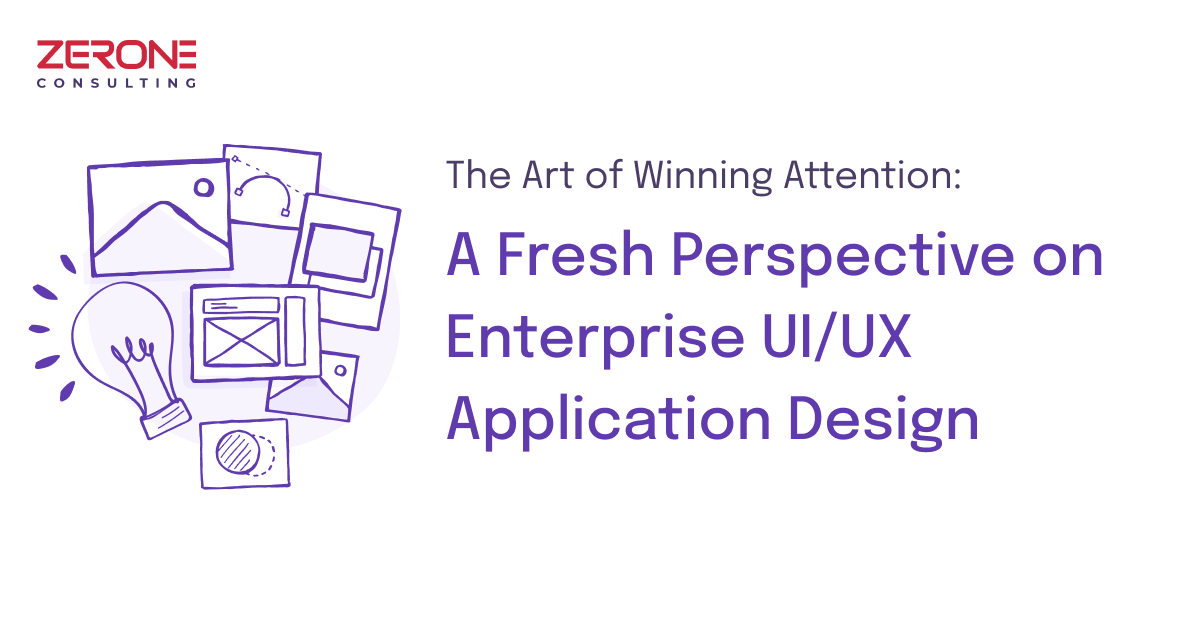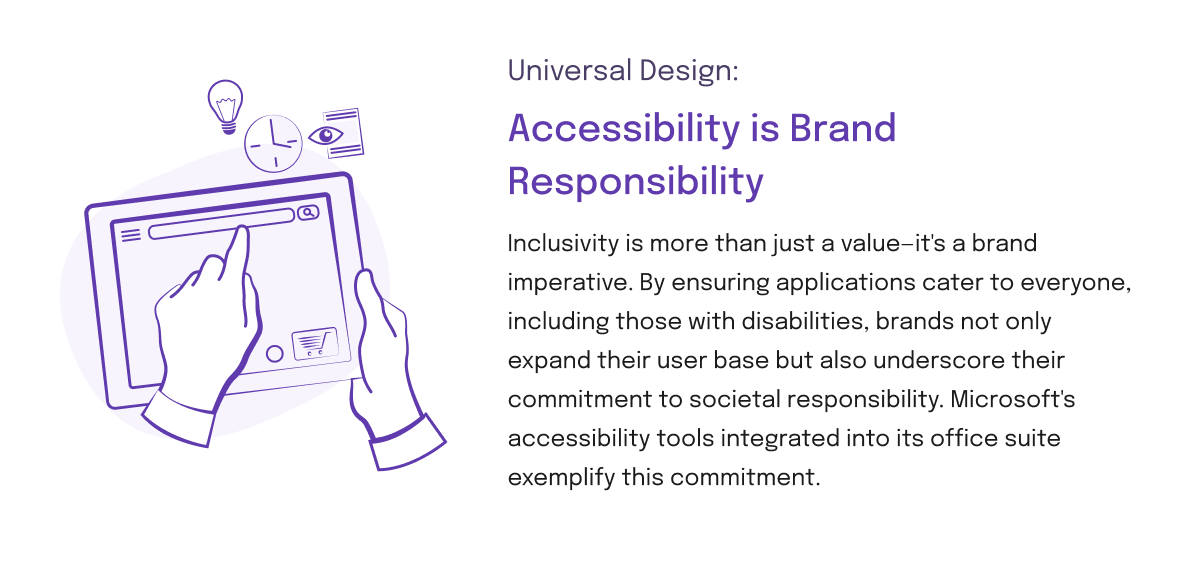A fresh perspective on enterprise ui-ux application design
In today’s dynamic digital landscape, enterprise applications serve a dual purpose — both as tools for task execution and as platforms for brand expression. Central to this duality is design. Specifically, UI/UX design. It’s no longer sufficient for software to merely ‘work’; it must also provide a compelling, intuitive, and memorable experience for its users.

1. Setting the Stage: The Union of Branding and Application Design
Brands speak through their aesthetics. This visual language conveys core values and promises and differentiates them in the market. A brand like Apple communicates elegance and innovation across its suite of products. Similarly, with its consistent cloud motif, Salesforce crafts an experience that resonates with its brand’s vision, ensuring users feel a seamless transition from their website to their enterprise application.

2. More than Skin Deep: UI/UX’s Deep-rooted Impact on Brand Authority
Historically, enterprise software was about functionality. Today, it’s about experience. Brands like Slack have redefined workplace communication not just through their feature sets but, more importantly, through intuitive design. Dropbox’s UI/UX transformation led to more explicit calls to action, boosting user engagement and establishing its stature in the market.

3. Modern Design Principles in Enterprise Applications
Relevance in design is a moving target. Today’s principles emphasize minimalism, adaptability, and responsiveness. Microsoft Teams, for example, transitioned to a design that is not only aesthetically appealing but also functionally robust, ensuring user engagement across devices.
4. Universal Design: Accessibility is Brand Responsibility
Inclusivity is more than just a value—it’s a brand imperative. By ensuring applications cater to everyone, including those with disabilities, brands not only expand their user base but also underscore their commitment to societal responsibility. Microsoft’s accessibility tools integrated into its Office suite exemplify this commitment.
5. Personalization: Crafting Unique User Narratives
Today’s users expect experiences tailored to them. Spotify’s “Discover Weekly” isn’t just a feature—it’s an embodiment of the platform’s understanding of individual tastes. However, with personalization comes the responsibility of maintaining user privacy, ensuring a trust-based relationship.
6. Embracing Feedback: The Cycle of Continuous Improvement
The only constant in technology is change. Brands that adapt, especially based on user feedback, stay ahead. Adobe’s continuous refinements to its Creative Cloud based on community feedback illustrate the impact of an iterative approach on both usability and brand perception.

7. The Future of Interaction in Enterprise UI/UX
Tomorrow’s interfaces will redefine user-software interaction. From gesture controls to immersive AR/VR experiences, brands have an array of tools to craft the next generation of applications. Ikea’s AR app, which visualizes furniture in a user’s living space, showcases the potential of such transformative interfaces.
Ushering in a New Era
The confluence of branding and UI/UX in enterprise application design dictates modern business narratives. It’s not the most feature-rich but the most resonant applications that capture attention. By embracing user-centric design principles, feedback, and a forward-looking approach, brands can craft applications that are not just tools but stories and experiences.
The Next Steps
As you navigate the digital realm, take a moment to evaluate your enterprise applications. Imbibe the insights shared, reshape your software narratives, and craft experiences that don’t just serve but captivate. At the heart of it is not just the software but the stories it tells and the impressions it leaves.
We can help!
Finding The Right Match: When Scrum Works Best
#Customapplicationdevelopment
Mvps - A Silver Bullet In Software Development
#Customapplicationdevelopment



